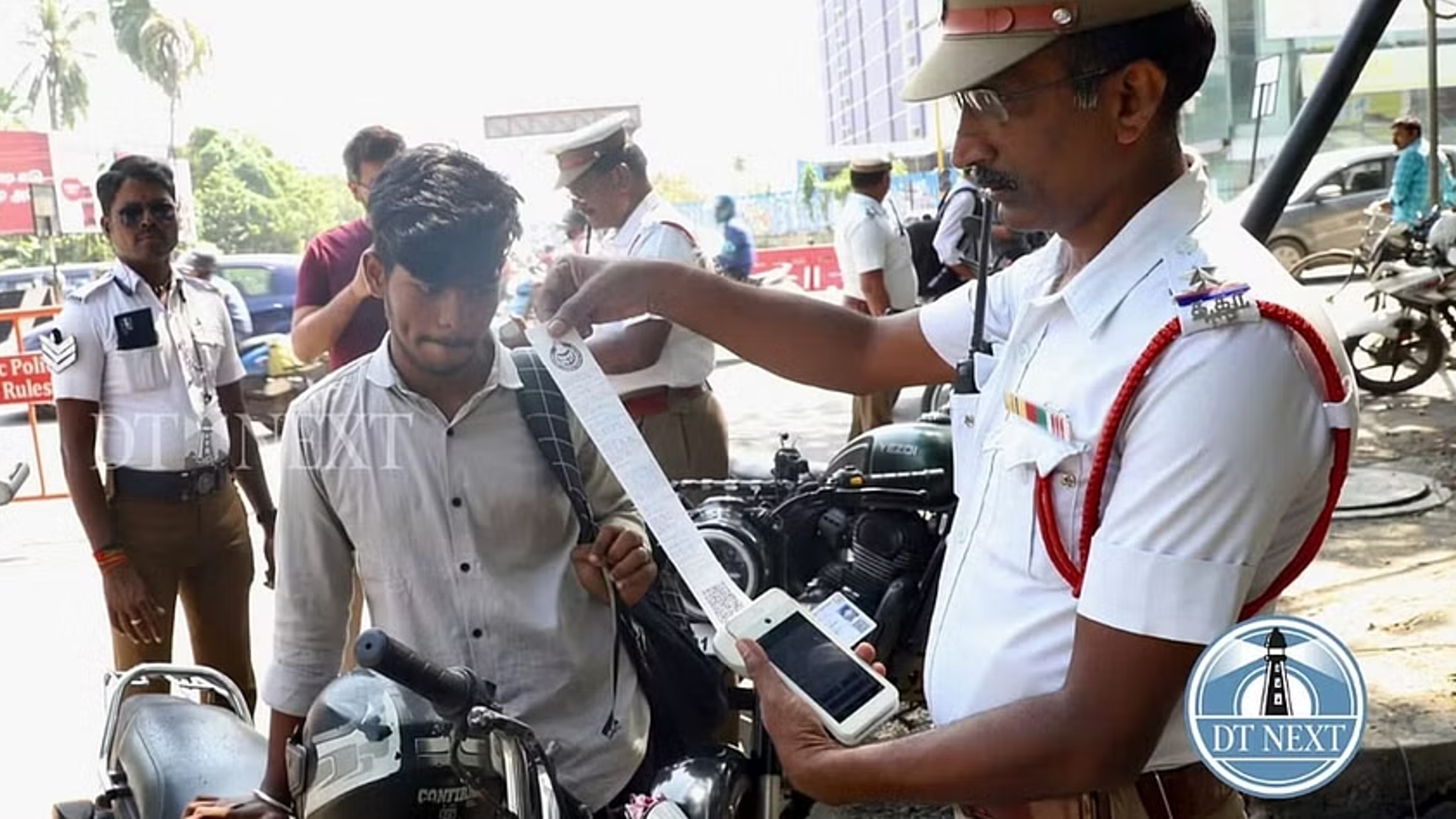Editorial: Capping need for speed on roads
The new fines are being enforced in the backdrop of recent statistics released by the National Crime Record Bureau (NCRB) collated in a report called ‘Accident Deaths and Suicides in India in 2021’.

CHENNAI: Last month, Tamil Nadu raised the penalties to be levied on those who run afoul of traffic rules. The heftier fines made effective since October 20 includes a five-fold leap for drunk driving - Rs 10,000 now, as compared to Rs 2,000 previously; usage of cellphones while driving will invite a penalty of Rs 10,000 for the second and subsequent violations. Helmet-free commutes can set you back by Rs 1,000 (from the previous Rs 100 fine), while over-speeding can now attract a fine of Rs 1,000-2,000 from the previous penalty of Rs 400.
The new fines are being enforced in the backdrop of recent statistics released by the National Crime Record Bureau (NCRB) collated in a report called ‘Accident Deaths and Suicides in India in 2021’. The report says that road accident cases pan-India have surged from 3.54 lakh cases in 2020 to 4.03 lakh cases in 2021, while fatalities jumped from 1.33 lakh in 2020 to 1.55 lakh cases in 2021. Tamil Nadu has taken the top spot in this unenviable metric, where it has recorded the largest number of deaths due to over-speeding — a staggering 11,419 deaths, which is 13.1% of the pan-India count. The State capital has also emerged on top when it comes to fatalities resulting from road accidents, with as many as 1,000 lives lost and 5,000 plus injured in 2021. These numbers are pertinent when one considers that new expressways and highways are cropping up across India in a rapid manner.
To jog one’s memory, in August this year, the Greater Chennai Traffic Police had introduced a QR code based system to enable convenient payment of spot fines by motorists. Four years ago, the traffic police had migrated to a cashless e-challan system, which had brought down instances of bribery as well. As many as 12 call centres have also been set up, which will help close the loop in payment of fines through phone call based reminders on pending violations. But amping up fines alone might be unable to bring down traffic violations.
Most city roads in India double up as obstacle courses for riders and commuters. Apart from potholes and missing manhole covers, there are stray animals on pavements and the risk of inundation during rains. Here in Chennai, there was anxiety on account of waterlogging, even as storm water drain works are yet to be completed. Let’s not forget, vehicles like auto-rickshaws are not equipped with any safety features like seat belts, airbags or ergonomically designed roll cages to protect the passengers in the event of a mishap.
Several improvements are expected in the public road infrastructure space, from the provisioning of smart traffic management systems across the State, to deploying a greater number of traffic policemen at busy junctions, as well installation of CCTVs in violation-prone zones. CM MK Stalin’s unveiling of the Kutty Cop Project, which educated 4.5 lakh school students on the fundamentals of road safety was a good start too.
As adults, we too need a change in perspective. Personal discipline needs to be cultivated early on. Wearing a helmet, or even fastening the front and rear seat belts in a car, signalling/using an indicator when changing lanes and so on must be part of our default response. In a way, we will need to catch them young to keep them safe.
Visit news.dtnext.in to explore our interactive epaper!
Download the DT Next app for more exciting features!
Click here for iOS
Click here for Android



